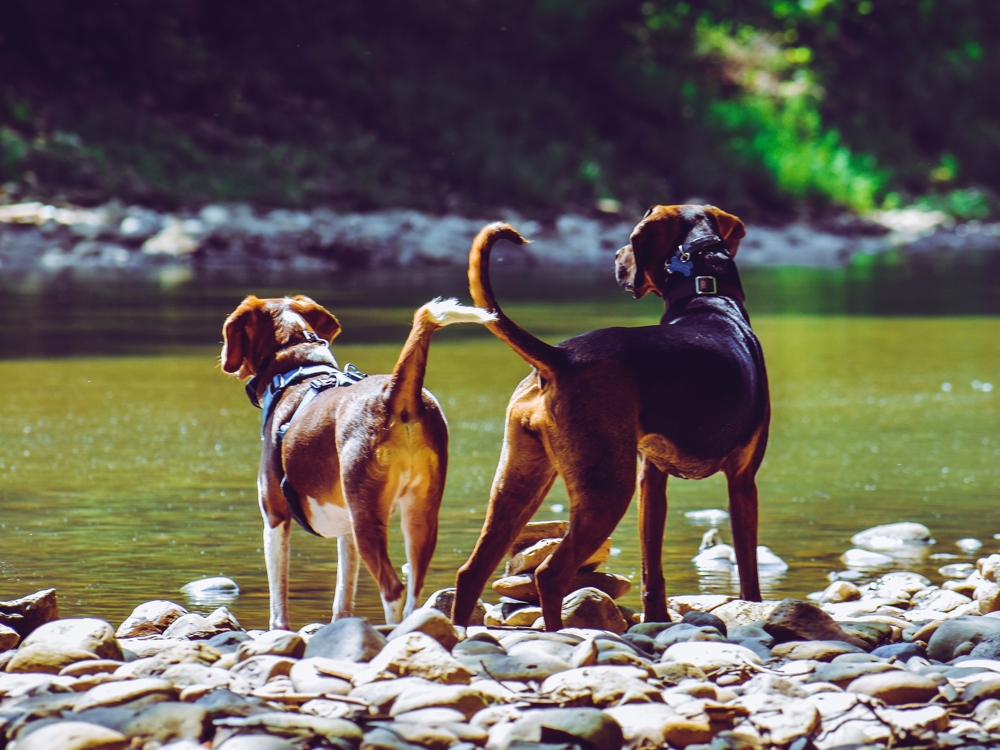Which Is Best? Wet or Dry Dog Food?
Share
[Sassy_Social_Share]Wet or dry dog food – it is one of the most common questions new dog owners have. The first question should really be which food has the best nutrition for my dog because that is most critical. But if you are debating between wet and dry dog food that is equally nutritious, each type has different advantages. Understanding them can help you make the best choice for your dog.
Every dog is different and has specific needs related to their food. What is best for one dog is not best for every dog. Your dog’s nutritional needs and feeding habits can change over time as they age and their lifestyle changes. The goal is to feed them in a way that supports their optimal health and well-being at every stage of life.
Why Choose Dry Dog Food?

Dry dog food is far and away the most popular choice. It’s certainly easier for owners to store and handle. But what about dogs? Is it best for them? Dry food offers many advantages to dogs, including some not so obvious ones.
- It is easier to keep fresh. If your dog is a slow eater or likes to graze on his food instead of eating it all quickly, dry dog food will stay good. Wet food needs to be eaten relatively quickly or it will go off. If you are at work all day and want to ensure your best friend has enough to eat, leaving down dry food is the best choice. You can also put dry dog food in a feeding dispenser. Some of those have a timer so food is released in portions over several hours.
- You can measure it precisely. Dry dog kibble is easy to pour into the measuring cup, which should always be specific to the brand and type of food you are using. Measuring your dog’s food accurately for an appropriate portion is important because it ensures that your dog will not be overfed or underfed.
- Crunchy dry dog food is better for your dog’s dental health. It can scrape off some of the tartar that accumulates on teeth, while wet food can contribute to the problem. You still need to look after your dog’s teeth with treats such as the Go Native Dental Super Sticks or the Leader Oral Pro Dental Sticks as well as regular brushing with special dog toothpaste.
- Dry dog food generally comes in a greater range of specialised formulations for dogs of different ages, sizes and needs. It is easier to find dry kibble for seniors, large or small breeds, and dogs with special dietary needs.
What Does Wet Dog Food Offer?
Wet dog food can come in either tins or pouches. These might hold one serving or a few servings, depending on the brand and your dog’s size. Some dog owners choose to feed wet food, and that can be a healthy choice provided they also pay extra attention to their dog’s dental health.
- Wet dog food generally has a stronger smell and taste. That appeals to dogs far more than it does to owners! If your dog is a very picky eater or is refusing food, wet food can often tempt them to eat. Of course, if your dog is off his food, the first step is to see your vet.
- While wet food is not as good for a dog’s teeth, it is easier for elderly dogs who have lost many teeth to eat. Never ignore dental problems in your dog, but if your dog’s teeth are in poor shape and it is preventing him from eating well, wet food could be the answer.
- Wet food is exactly that – wet. By definition it includes a lot of moisture. If your dog is not drinking enough water and your vet has ruled out any underlying medical issue, wet food could help your dog avoid dehydration. In very hot and dry climates, wet food can be important for a dog’s health for this reason.
If you are using wet food, be sure to cover and refrigerate any food left in the tin that you don’t serve your dog. Once you open the tin, it will spoil if it is not refrigerated.
Do You Have to Choose between Wet and Dry Dog Food?
For many dogs who benefit from wet dog food, it is not necessary or best to put them on a diet of wet food exclusively. They can get the extra encouragement to eat and moisture content by adding some wet food to their dry food. That way they can have the best of both foods.
If you are trying to encourage your dog to eat, you can mix a little of the wet food with the regular dry food. Don’t just add the wet food on top of the dry. Your dog will probably just eat the wet food and ignore the main meal. Instead, stir it around so the wet food is thoroughly mixed in with the dry. If you are simply trying to ensure your dog is well hydrated, you can mix the wet food with the dry or serve it separately.
When you decide to supplement your dog’s diet with wet food, choose the brand and type carefully. Add it slowly and gradually to your dog’s diet so as not to upset their digestion. Unless your dog is underweight and your vet advises otherwise, reduce the amount of dry food as you increase the amount of wet food. The one disadvantage of mixing wet and dry dog foods is that it is more difficult to determine and measure out the correct amount of food. One way to keep it simple is to give your dog 3/4s of the recommended portion of dry food and ¼ of the recommended portion of wet food for their size.
Any time you are changing your dog’s diet, it makes sense to talk to your vet and make sure that the foods you choose are optimum for your dog’s size, age, activity level and overall health.





